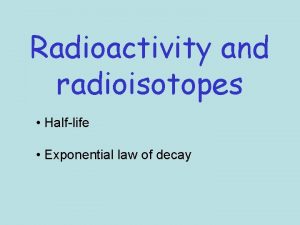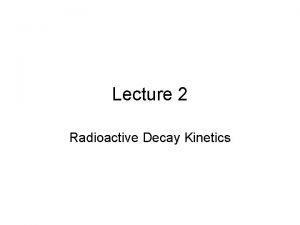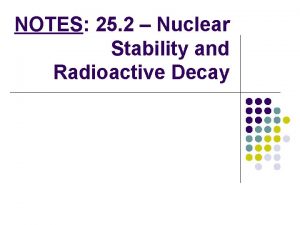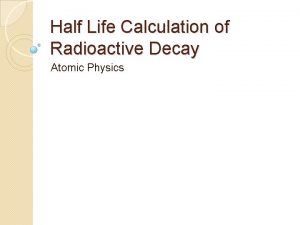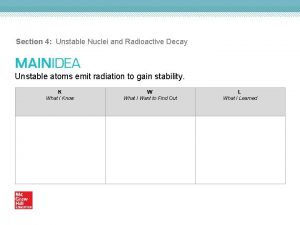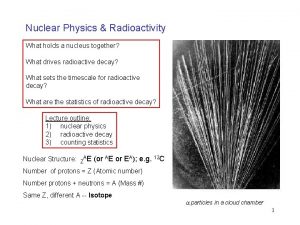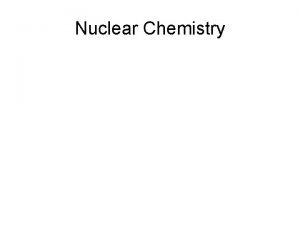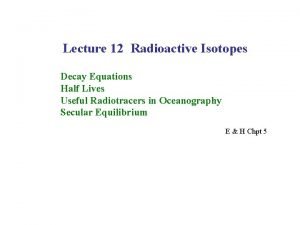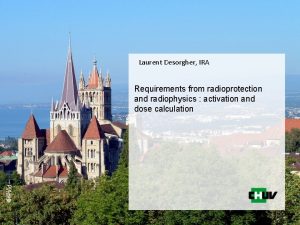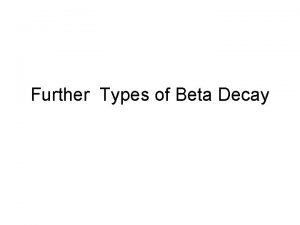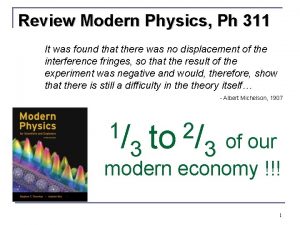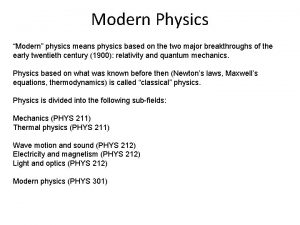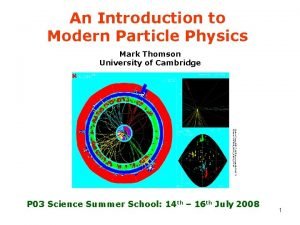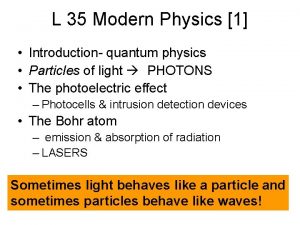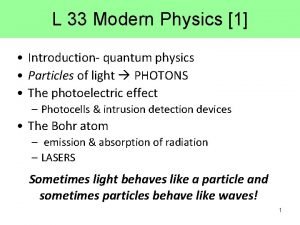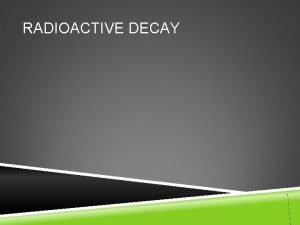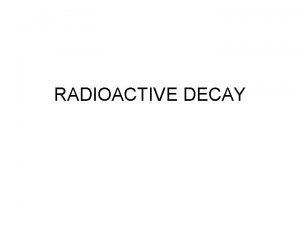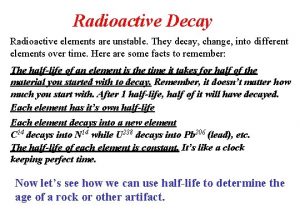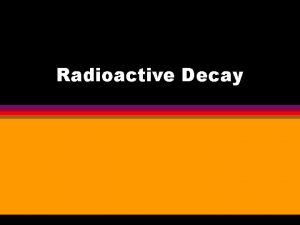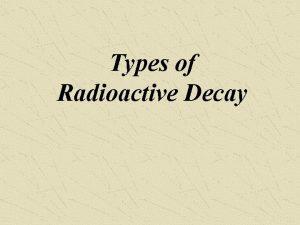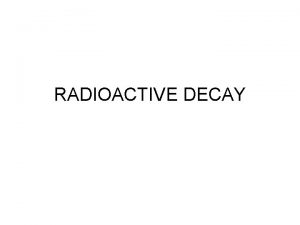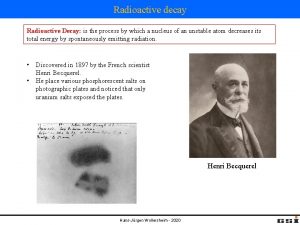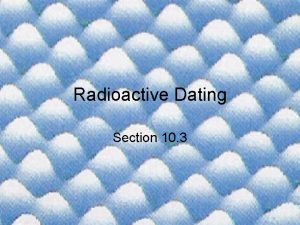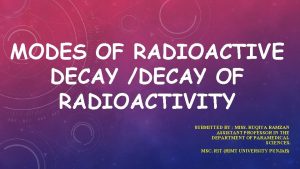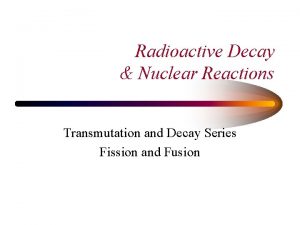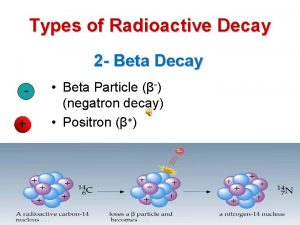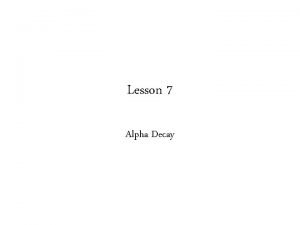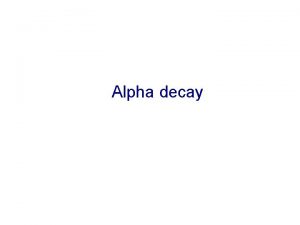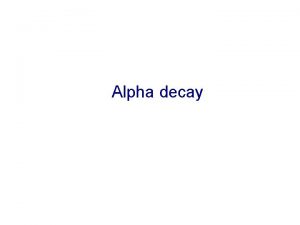Modern Physics Radioactive Decay Radioactive Decay Look at























- Slides: 23

Modern Physics Radioactive Decay

Radioactive Decay Look at the periodic table given to you. Find element with the atomic number 6 What is it?

Radioactive Decay The element with the atomic number 6 is Carbon Look at the atomic mass below the word Carbon What is it?

Radioactive Decay The mass is 12. 011 amu. Remember that protons and neutrons are about 1 amu each Therefore you can assume that there are 12 particles in the nucleus, 6 protons 6 neutrons

Radioactive Decay You would then write the nuclear symbol for Carbon – 12 as 126 C (with the 6 over the 6)

Radioactive Decay Find Oxygen on the chart.

Radioactive Decay Find Oxygen on the chart. Atomic number 8. How many protons does oxygen have?

Radioactive Decay Find Oxygen on the chart. Atomic number 8. How many protons does oxygen have? Yes – 8 protons How many neutrons does the most common Isotope of Oxygen have?

Radioactive Decay Find Oxygen on the chart. Atomic number 8. How many protons does oxygen have? Yes – 8 protons How many neutrons does the most common Isotope of Oxygen have? 8

Radioactive Decay Find Argon on the chart. Number 18

Radioactive Decay Find Argon on the chart. Number 18 How many protons does it have?

Radioactive Decay Find Argon on the chart. Number 18… How many protons does it have? 18 I think you are getting it. How many total Protons and Neutrons?

Radioactive Decay Find Argon on the chart. Number 18… How many protons does it have? 18 I think you are getting it. How many total Protons and Neutrons? 40

Radioactive Decay • Write the symbols for the following atoms most common isotope. • Fluorine(9) • Neon(10) • Sodium(11) • Radon(86) • Uranium(92)

Radioactive Decay • Review from yesterday • An atom is stable (not radioactive) if it is in the belt of stability • An atom is unstable (radioactive) if it is outside the belt of stability • All elements beyond number 83, Bismuth are unstable - WHY?

Radioactive Decay • Above element 83, the protons are farther and farther away from each other in the nucleus, therefore requiring a greater nuclear force to overcome the electrostatic repulsive forces. The nuclear force is not strong enough to hold together the protons when more than 83 of them are packed into a nucleus.

Radioactive Decay • Three types of radioactive decay • 2 4α • -1 0 • +1 alpha particle decay also shown as 24 He Beta particle decay (An electron from a neutron) ß 0 ß Positron emission (a positively charged electron) • ϒ gamma ray High energy electromagnetic waves

Radioactive Decay • 2 4α alpha particle decay also shown as 24 He An alpha particle is two protons and two neutrons bound together and emitted from the nucleus. Alpha particle are identical to a helium nuclei and have a charge of 2+

Radioactive Decay • 1 0 Beta particle decay ß • A beta particle is actually an electron emitted from the nucleus. To create a beta particle, a neutron converts itself into a proton and ejects the right combination of quarks to make an electron

Radioactive Decay • +1 0 Positron emission ß • Elements below the belt of stability have too many protons. To decrease the number of protons, a proton emits a positron, or positively charged electron

Radioactive Decay • Not a decay per say, but another way to get rid of too many protons, is Electron Capture • In electron capture, an inner orbital electron is captured by the nucleus of its own atom. This electron combines with a proton and forms a neutron.

Radioactive Decay

Radioactive Decay
 Look down to the left
Look down to the left Exponential law
Exponential law Radioactivity formula
Radioactivity formula Natural vs artificial radioactivity
Natural vs artificial radioactivity Half life example
Half life example Half life
Half life Unstable nuclei and radioactive decay
Unstable nuclei and radioactive decay Radioactive decay law
Radioactive decay law Chemistry
Chemistry Radioactive decay formula
Radioactive decay formula Radioactive decay formula
Radioactive decay formula Type of radioactive decay
Type of radioactive decay Why does it happen
Why does it happen University physics with modern physics fifteenth edition
University physics with modern physics fifteenth edition Types of beta decay
Types of beta decay How to find the decay factor
How to find the decay factor Activity 1 a) look at the picture
Activity 1 a) look at the picture Activity 1 image
Activity 1 image Activity 1 look at the picture
Activity 1 look at the picture Shapiro experiment
Shapiro experiment Document
Document Modern particle physics mark thomson
Modern particle physics mark thomson Modern physics introduction
Modern physics introduction Modern physics introduction
Modern physics introduction

